Home
/ About Egypt / Cairo's Tahrir Square: From traffic headache to revolutionary icon
Cairo's Tahrir Square: From traffic headache to revolutionary icon

Created: Feb 05, 2011,
modified: Jan 13, 2012,
overall rating: 5.000
Thousands congregated Friday in Tahrir Square, dubbed Egypt’s “liberated zone" by protesters.Friday marked day 11 of the revolution that erupted on 25 January to demand the ouster of the Hosni Mubarak regime.
“Before 25 January, I didn’t hope for more than a few hundred to take part in the planned protest,” activist Nariman Youssef says. But 25 January was destined to become a day of nation-shaking protests, which, in Cairo, converged into centrally-located Tahrir Square.“Today, it feels like a utopia in here,” Youssef said.
Conceived as part of Khedive Ismail’s "Paris on the Nile" dream about Cairo in the 19th century, Tahrir Square became a model of sought-after modernity. Throughout the years, it grew to become a site of political dissent, most notably during the 1977 bread riots, the 2003 demonstrations against the US-led war on Iraq, and, today, the "Revolution of Anger."
For the times in between, Tahrir Square was a bustling center connecting one end of the city to the other, often ripe with the difficulties associated with Cairo’s busy everyday life. Fast food chains, travel agencies and touristy bazaars have been the main facets of the iconic square in its 21st-century attire.
But for many of the protesters who took over the square today, the area has been experienced in an unprecedented manner.
“For me, the square always meant the Mugamaa [the capital’s main administrative hub], which is a face of the government,” said protester Malak Labib, who has been sleeping at the square for the last few days. Alongside her fellow activists, she has set up a shelter in one corner of the square, consisting of three tents. One is saved for food, the other for sleeping bags and the third for people to take turns resting in.
Now Labib suggests the square be renamed to "Midan al-Thawra," or "Revolution Square" in Arabic.
Besides the thousands camping around the square for the past few days, the square speaks the revolution. A large piece of cloth was rolled on the façade of a facing building. “Our Demands,” it reads, listing seven points, starting with Mubarak’s ouster and moving on to an interim government free of any figures associated with the current regime. The list of demands also includes the dissolution of parliament, an investigation into the violence waged against protesters on 29 January, a new constitution, the end of the emergency law and free elections.
The list of demands on the building’s façade overlooks the popular organization going on in the square: intermittent garbage collection rounds, food and water procurement and distribution, a media center, and a field hospital. Music, poetry and graffiti are all forms of on-site entertainment in the square. In hundreds of pockets, groups gathered here and there to honor the fallen, speak politics, remember the past, and ponder the future.
Besides the political battle that the square embodies today, thoughts about its future are also discussed.
For activist Mohamed Kalfat, the square should remain a symbol of liberation. “This is a place where we fought battles, spilled blood, and talked politics at night," he says. "It should be opened up as a festive pedestrian area on 25 January of every year to commemorate these days."
Al Masry Al Youm
“Before 25 January, I didn’t hope for more than a few hundred to take part in the planned protest,” activist Nariman Youssef says. But 25 January was destined to become a day of nation-shaking protests, which, in Cairo, converged into centrally-located Tahrir Square.“Today, it feels like a utopia in here,” Youssef said.
Conceived as part of Khedive Ismail’s "Paris on the Nile" dream about Cairo in the 19th century, Tahrir Square became a model of sought-after modernity. Throughout the years, it grew to become a site of political dissent, most notably during the 1977 bread riots, the 2003 demonstrations against the US-led war on Iraq, and, today, the "Revolution of Anger."
For the times in between, Tahrir Square was a bustling center connecting one end of the city to the other, often ripe with the difficulties associated with Cairo’s busy everyday life. Fast food chains, travel agencies and touristy bazaars have been the main facets of the iconic square in its 21st-century attire.
But for many of the protesters who took over the square today, the area has been experienced in an unprecedented manner.
“For me, the square always meant the Mugamaa [the capital’s main administrative hub], which is a face of the government,” said protester Malak Labib, who has been sleeping at the square for the last few days. Alongside her fellow activists, she has set up a shelter in one corner of the square, consisting of three tents. One is saved for food, the other for sleeping bags and the third for people to take turns resting in.
Now Labib suggests the square be renamed to "Midan al-Thawra," or "Revolution Square" in Arabic.
Besides the thousands camping around the square for the past few days, the square speaks the revolution. A large piece of cloth was rolled on the façade of a facing building. “Our Demands,” it reads, listing seven points, starting with Mubarak’s ouster and moving on to an interim government free of any figures associated with the current regime. The list of demands also includes the dissolution of parliament, an investigation into the violence waged against protesters on 29 January, a new constitution, the end of the emergency law and free elections.
The list of demands on the building’s façade overlooks the popular organization going on in the square: intermittent garbage collection rounds, food and water procurement and distribution, a media center, and a field hospital. Music, poetry and graffiti are all forms of on-site entertainment in the square. In hundreds of pockets, groups gathered here and there to honor the fallen, speak politics, remember the past, and ponder the future.
Besides the political battle that the square embodies today, thoughts about its future are also discussed.
For activist Mohamed Kalfat, the square should remain a symbol of liberation. “This is a place where we fought battles, spilled blood, and talked politics at night," he says. "It should be opened up as a festive pedestrian area on 25 January of every year to commemorate these days."
Al Masry Al Youm
Your Rating:
Overall rating: 5.000
Totally voted: 1
Comments
Login/Registration
Weather in:
Exchange Rates
1 USD = 16.200 LE
1 EUR = 18.040 LE
News
-
IMF loan expected next month
Apr 22, 2013, rating: 3.000, 3 votes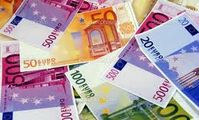 Egypt may secure an International Monetary Fund loan agreement in about amonth, state news agency MENA reported, quoting "informed" sources ...
Egypt may secure an International Monetary Fund loan agreement in about amonth, state news agency MENA reported, quoting "informed" sources ...
-
Egypt received 11 million tourists in 2012 and aims to boost that number to 14 million in 2013.
Jan 22, 2013, rating: 3.000, 2 votes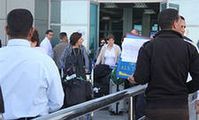
Egypt received 11 million tourists in 2012 and aims to boost that number to 14 million in 2013.
-
Egypt limits travelers leaving country to US$10,000 in cash
Dec 26, 2012, rating: 3.250, 4 votes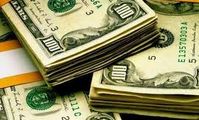 Egypt has banned travelers from carrying more than US$10,000 in foreigncurrency cash in or out of the country ...
Egypt has banned travelers from carrying more than US$10,000 in foreigncurrency cash in or out of the country ...
-
National Coalition on Climate Change for Egypt is born
Nov 30, 2012, rating: 5.000, 1 votes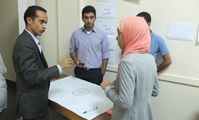 The global COP18 conference on climate change opens in Doha Monday.About 17,000 participants from all over the world ...
The global COP18 conference on climate change opens in Doha Monday.About 17,000 participants from all over the world ...
-
Judgment for sexual harassment
Nov 14, 2012, rating: 3.600, 5 votes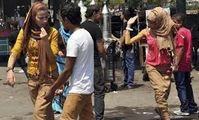 A man was sentenced to two years in prison and fined LE 2,000 for sexually harassing a woman, an ...
A man was sentenced to two years in prison and fined LE 2,000 for sexually harassing a woman, an ...
-
Scientists are enthusiastic about hydrogen's green applications
Nov 13, 2012, rating: 4.000, 3 votes
As fossil fuel reserves decrease, many countries are turning to hydrogen as one of the main sources of alternative energy ...








